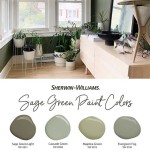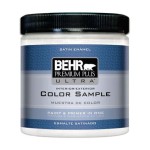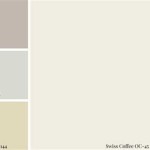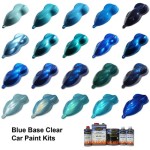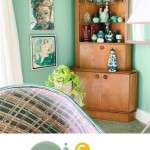Best Colour To Paint Interior Of House: A Comprehensive Guide
Selecting the ideal paint color for a home's interior is a multifaceted decision. It involves considering various factors, including the room's function, the desired ambiance, the existing décor, and the impact of natural and artificial lighting. The best color is not a static concept but rather a dynamic choice tailored to the specific characteristics and intended use of each space.
Color psychology plays a significant role in how individuals perceive and react to different hues. Understanding these psychological effects can be instrumental in creating the desired atmosphere within a home. Furthermore, the practical considerations of light reflection, room size, and the longevity of color trends influence the final outcome. This article will explore these elements to provide a comprehensive guide to choosing the best color for painting the interior of a house.
Understanding the Psychology of Color
Each color evokes different emotions and associations. Utilizing this understanding can fundamentally alter the feel of a room. Red, for example, is often associated with energy, passion, and excitement. It can be a stimulating color, but in excess, it can also feel overwhelming or aggressive. Therefore, red is often used as an accent color rather than the primary color for large areas.
Blue, conversely, is frequently linked to calmness, serenity, and stability. It can create a relaxing and peaceful atmosphere, making it suitable for bedrooms or bathrooms. However, too much blue can feel cold or impersonal. The specific shade of blue also matters; lighter blues tend to be more airy and refreshing, while darker blues can be more sophisticated and dramatic.
Yellow is associated with happiness, optimism, and sunshine. It can brighten up a room and create a cheerful atmosphere. However, certain shades of yellow can be overwhelming or even irritating to some people. Soft, muted yellows are generally more palatable for larger spaces.
Green is often associated with nature, growth, and harmony. It can create a calming and refreshing atmosphere, making it suitable for living rooms or bedrooms. Green is also considered a versatile color, as it can complement a wide range of other colors and styles.
Purple has historically been linked with royalty, luxury, and creativity. It can add a touch of elegance and sophistication to a space. Lighter shades of purple, such as lavender, can be calming and peaceful, while darker shades, such as plum, can be more dramatic and opulent. However, purple can also feel heavy or overwhelming if used excessively.
Neutral colors, such as white, gray, beige, and cream, are often chosen for their versatility and ability to create a blank canvas. These colors can be easily paired with other colors and styles, and they can create a sense of spaciousness and light. However, neutral colors can also feel bland or uninspired if not properly accented with other colors and textures.
Considering Room Function and Lighting
The intended purpose of a room should significantly influence the color selection. A bedroom, for example, should ideally be painted in colors that promote relaxation and sleep. Soft blues, greens, or neutral colors are commonly chosen for bedrooms.
A living room, on the other hand, can accommodate a wider range of colors, depending on the desired atmosphere. Warm colors, such as reds, oranges, and yellows, can create a cozy and inviting space. Cooler colors, such as blues and greens, can create a more calming and sophisticated atmosphere.
Kitchens often benefit from bright and cheerful colors that stimulate appetite and energy. Whites, yellows, and light greens are popular choices for kitchens. However, it is important to consider the existing cabinets and countertops when choosing a kitchen color to ensure a cohesive look.
Bathrooms typically benefit from light and airy colors that create a sense of cleanliness and spaciousness. Whites, blues, and greens are commonly used in bathrooms. The size of the bathroom also plays a role; smaller bathrooms often benefit from lighter colors that make the space feel larger.
The quantity and quality of both natural and artificial light within a room are crucial factors to consider. A room with ample natural light can handle darker colors without feeling oppressive. Conversely, a room with limited natural light should be painted in lighter colors to maximize brightness.
Artificial lighting can also affect how colors appear. Incandescent light tends to warm colors, while fluorescent light tends to cool them. LED lighting offers a wider range of color temperatures, allowing for greater control over the overall appearance of a room. It is advisable to test paint colors under different lighting conditions before committing to a final choice.
Practical Considerations: Size, Existing Décor, and Color Trends
The size of a room can be visually altered through the strategic use of color. Lighter colors tend to make a room appear larger and more spacious, while darker colors can make a room feel smaller and more intimate. Therefore, in small rooms, it is generally advisable to use lighter colors on the walls.
The existing décor within a room, including furniture, flooring, and accessories, should also be taken into account. The chosen wall color should complement the existing elements to create a cohesive and harmonious look. Consider the color palettes already present in the room and select a wall color that either blends seamlessly or provides a complementary contrast.
While adhering strictly to color trends can lead to a dated look in the long run, being aware of current trends can inform the selection process. Current trends often reflect broader societal shifts and can offer fresh perspectives on color combinations and applications. However, it is essential to prioritize personal preferences and the overall aesthetic of the home over fleeting trends.
Durability and ease of maintenance are also practical considerations when choosing paint. Different paint finishes offer varying levels of sheen and durability. Matte finishes are less reflective and tend to hide imperfections, but they are also less washable. Gloss or semi-gloss finishes are more durable and easier to clean, but they also highlight imperfections. Eggshell and satin finishes offer a balance between durability and aesthetics.
Furthermore, consider the type of paint being used. Latex paints are water-based, low in VOCs (volatile organic compounds), and easy to clean up. Oil-based paints are more durable and offer better coverage, but they are also higher in VOCs and require more effort to clean up. Acrylic paints offer a good balance of durability, coverage, and low VOCs.
Before committing to a specific color, it is crucial to sample the paint in the actual room. Paint colors can appear different depending on the lighting and surrounding colors. Paint a small area of the wall and observe it under different lighting conditions throughout the day. This will help ensure that the chosen color is the right fit for the space.
Ultimately, the best color to paint the interior of a house is a subjective decision that depends on a variety of factors. By carefully considering the psychology of color, the function of the room, the lighting conditions, the size of the space, the existing décor, and practical considerations such as durability and maintenance, homeowners can make informed choices that create beautiful and harmonious living spaces.

The 5 Best Interior Paint Colors For Feeling Refreshed And Relaxed Metzler Home Builders

Tips For Choosing The Best Color Your Interior Project

25 Of The Best Paint Colors For Whole House Welsh Design Studio

10 Best Trending 2024 Interior Paint Colors To Inspire Décor Aid

51 Best Bedroom Paint Color Ideas For 2024

The Best 12 Steps To Pick Paint Colors For Bedrooms Vista Painters

Best Paint Colors For Home Staging Interior Exterior

15 Perfect Wall Colours To Transform Your Space Asian Paints

The Top 8 Grey Wall Paint Colours For A Timeless Interior

Best Interior Paint Colors Whole House Color Scheme Abby Organizes
Related Posts


